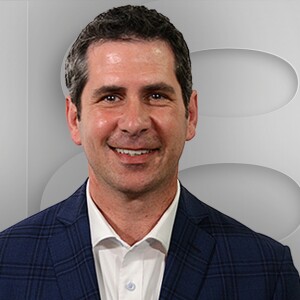RICHMOND, Ky (LEX 18) — The mass shooting at Columbine High School happened in April of 1999, but to listen to Frank DeAngelis talk about it, you’d think it happened in April of this year. That’s how vividly the nightmarish scene remains burned on his brain.
“I looked out my office door and saw (one of) the gunman about 50 yards away, and I ran towards him. Later, police asked me why. I told them we had about 25 girls in the area getting ready for a physical education class,” Frank DeAngelis recalled.
DeAngelis then shares a story of the ultimate stroke of good fortune.
“I reached into my pocket and had 30 keys on a key ring. The first key I stuck in, the door opened or I wouldn’t be here,” he said as he was able to get those students into the gym and out to safety.
Mr. DeAngelis was in Kentucky on Wednesday to address a large group of school administrators and school resource officers. Now that Kentucky’s legislature passed a bill requiring an SRO in every school building, this week’s symposium is being held to make sure they do the job properly.
“It’s a 120-hour certification for anyone that’s an SRO and that includes mental health, or helping students with mental health issues,” said Ben Wilcox, the state’s school security marshal.
Wilcox said the armed SRO will serve as a deterrent but is also there to help diffuse situations that could be problematic, if not as devastating as a shooting.
“That school officer might be able to relate to them because of a problem at home. Maybe that officer has been to the student’s home,” Wilcox said of the diverse role the officers can have in the lives of their students.
It used to be that every school campus had to have at least one school resource officer on duty. But with so many campuses having two or more schools on the property, the new law requires that one officer be assigned to each building. The language in this bill comes with one caveat; that the funding is there for a district to employ the officer. If it can’t, Wilcox said the district would need to get in touch with his office, and he’d then locate the resources to accommodate the district.
“You’re taking a school, putting someone there, and taking the soft target away from it,” Wilcox said. “We’ll never know how many school shootings were stopped because someone was there as a deterrent.”
Someone was there at Columbine that fateful day, but not inside the buildings. At the time, DeAngelis explained, they were only allowed to patrol the perimeter. He doesn’t know if the outcome would’ve been any different had an officer been inside, but he does know that day changed his life forever. He spent 15 more years as Columbine’s principal following the shooting, wanting to remain in place at least until the Kindergarten classes from that year eventually graduated high school. Now his calling is to work with schools on security matters. He does his work with those 13 victims in his heart.
“My beloved 13,” he calls them as he names and shows the faces of each during his presentation.
“Every morning before my feet hit the floor I recite the names of my beloved 13. You never get over it,” he said.
His goal is to make sure not one more principal has to live with that kind of pain.



